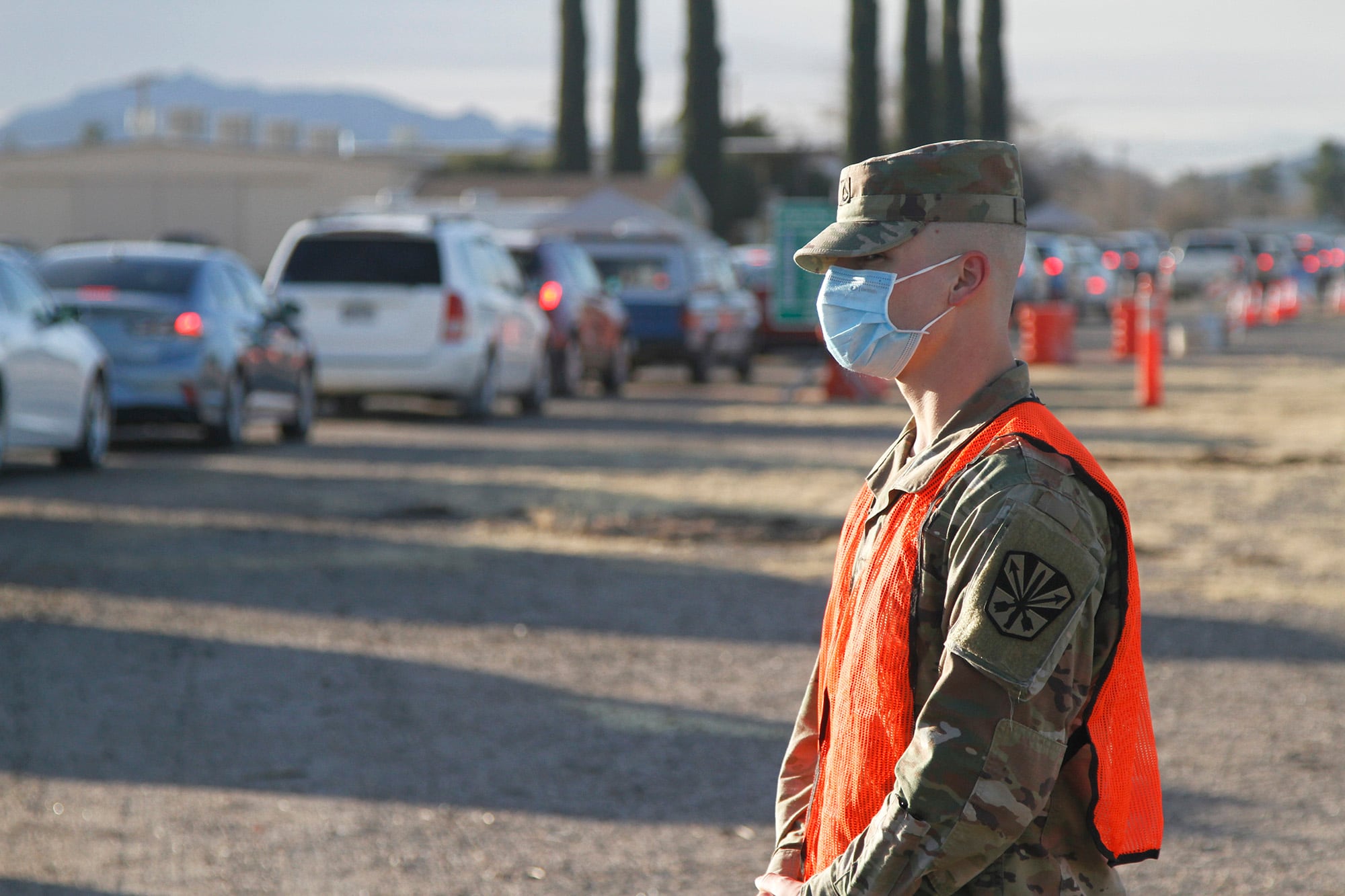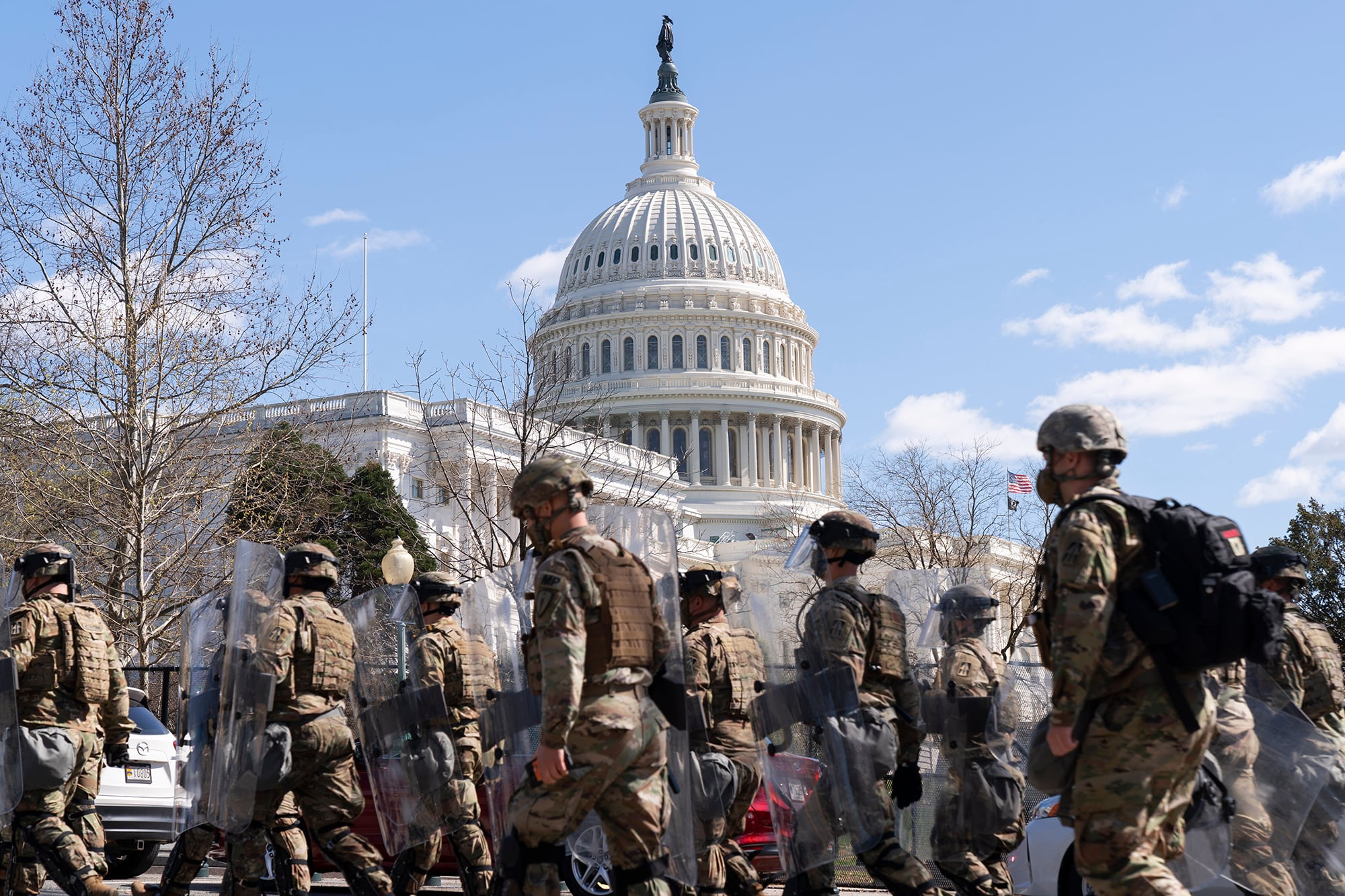Five hundred soldiers is not a precipitous drop in personnel for a force of more than 440,000, but it’s definitely not what the National Guard would have preferred.
The White House’s budget proposal, released in May, would like the Army National Guard to drop from 336,500 to 336,000, while holding the Air National Guard at 108,300. This comes following a year in which more Guard troops were deployed than at any time since World War II, Army Gen. Dan Hokanson, the National Guard Bureau’s chief, told reporters on Wednesday.
“And so we look back at 2020, some states had a significant increase in the amount of [operational] tempo that they had previously had. And so they’ve asked for additional force structure,” Hokanson told Military Times. “Those decisions are made at the secretary of the Army and the secretary of the Air Force level. And of course, like all organizations, we would like to grow if possible.”
The Guard mobilized more than 100,000 troops in 2020, to cover everything from COVID-19 support to protest response to hurricane relief and regular overseas deployments, adding up to 21 million days activated, Hokanson said.
“You know, it hasn’t just been a long year,” Army Maj. Gen. Bret Daugherty, Washington state’s adjutant general, told reporters in late January. “It’s been a long 20 years. And I just want to focus on that. We’re all consumed with our domestic operations right now, but it is simultaneous with our overseas deployments, which have not let up one iota.”
At the time, there were about 67,000 National Guard troops activated around the world. More than 33,000 of those were doing domestic missions, including those guarding the Capitol in Washington, D.C., and more than 20,000 others doing COVID-19 support, from testing centers to vaccination sites.
“If we had a little bit more force structure, it wouldn’t be such a stretch to get these missions accomplished,” Daugherty added.
Both the California and Florida adjutants general agreed.
“The bottom line is that as Guard mission sets continue to increase, the demand signal for the Guard goes up,” Army Maj. Gen. David Baldwin, California’s Guard boss, said in January. “We’re largely victims of our own success in that regard. To that end, the Guard is not big enough and we need to grow.”
Air Force Maj. Gen. James Eifert, the adjutant general of the Florida National Guard, told the Florida Senate that month that how his force doesn’t have enough troops to shoulder the demand.
“We cannot adequately support the state’s citizens on Florida’s [hypothetical] worst day with the size of our National Guard at this point,” said Eifert, according to Florida Politics.
He cited the fatigue of current Guardsmen as one of the most pressing reasons to expand his force.
In the absence of an end strength boost, Hokanson said, states will be able to rely on partnerships with their neighbors should they need a personnel surge.
“Very similar to what we do during hurricanes, in the case of one of the gulf states, we meet every year beforehand to identify those forces that could come and meet those requirements,” he said.
RELATED

There’s also the issue of recruiting and retention. The Army National Guard met its retention mission last year, despite heavy, unforeseen mobilizations that took troops away from their families during a time of national crisis.
It remains to be seen whether 2020 will have longer-term effects on the Guard’s ability to attract and retain personnel, but Hokanson said it’s an issue they keep a close eye on anyway.
Job security might’ve kept some troops in uniform, but with a recovering economy, balancing work and service might become less attractive.
“So we have to really work very closely with the adjutants general so that we can meet the requirements, and do everything we can to reduce the burden on our Guardsmen, to do those mission sets that are critical to our nation and our community,” Hokanson said. “But then sometimes get away from some of those mission sets, so that we reduce the burden on our personnel. And it’s, it’s an ongoing thing that we really have to monitor very closely every single day.”
Hokanson is in favor of offering Tricare Reserve Select to all Guardsman, he said, which would ensure they are fully covered by medical insurance all year-round, and not just if they’re on orders for a certain amount of time.
Advocates have argued that Guard pay and benefits should be completely overhauled, to ensure reservists who are doing much more than their one weekend a month are compensated more comparably to active-duty troops.
That proposition has garnered support at the highest levels of the Pentagon, though it’s not clear when or how changes might be implemented.
“The joint force — active duty, Reserve and National Guard — it’s a total force,” Army Gen. Mark Milley, chairman of the Joint Chiefs of Staff, told the Senate Armed Services Committee on June 14. “And we have a commitment to ensure that we have appropriate and fair pay and benefits given to our National Guard troops and our reservists.”
Meghann Myers is the Pentagon bureau chief at Military Times. She covers operations, policy, personnel, leadership and other issues affecting service members.




